High performance water-wettable SPE products for robust reliable sample prep for LC-MS/MS analysis, including PFAS.
Extract analytes from aqueous matrices using a hydrophobic (non-polar) retention mechanism.
Extract analytes from non-polar matrices using a polar retention mechanism.
Extract acidic or basic analytes from biological fluid matrices using a robust dual mixed-mode retention mechanism.
Extract acidic or basic analytes from aqueous matrices using a selective ion exchange retention mechanism.
Solid-phase extraction solution for bioanalysis of therapeutic oligonucleotides
A selection of application specific SPE products.
SPE cartridges for fully integrated automated analytical workflows.
High performance extraction of SVOCs from water samples.
SPE disks for SVOC in water extraction, pre-assembled in disposable holders for maximum speed and convenience.
The first-class option for Hexane Extractable Material. Pacific® Premium Oil and Grease SPE Disks provide fast flow rates with dirty samples for excellent recovery and precision.
Empty tubes, frits, caps, stopcocks, adapters and more....
High purity, solvent resistant collection plates.

